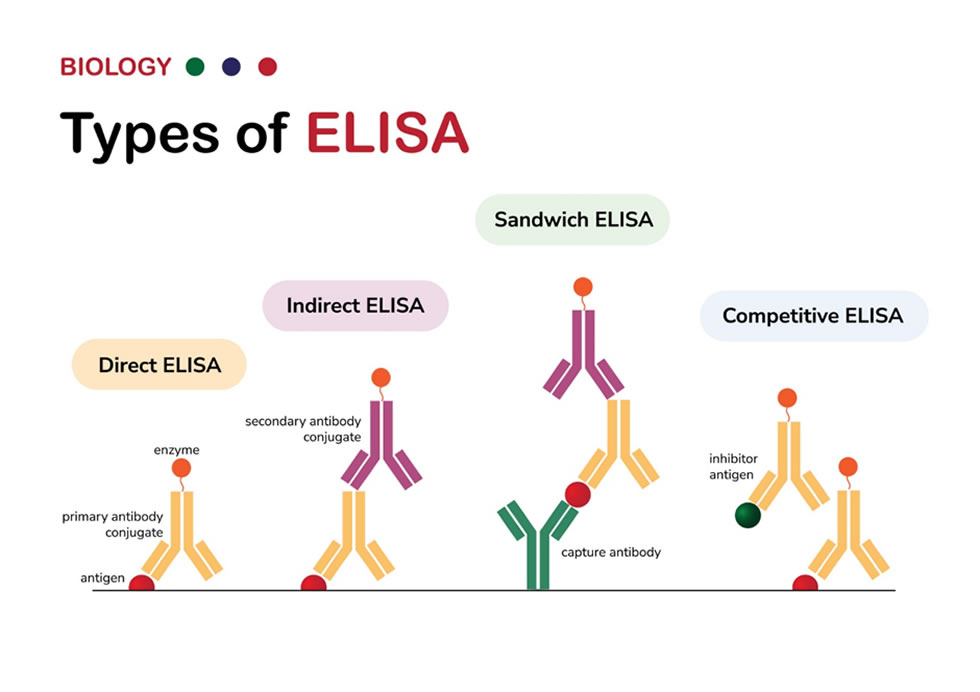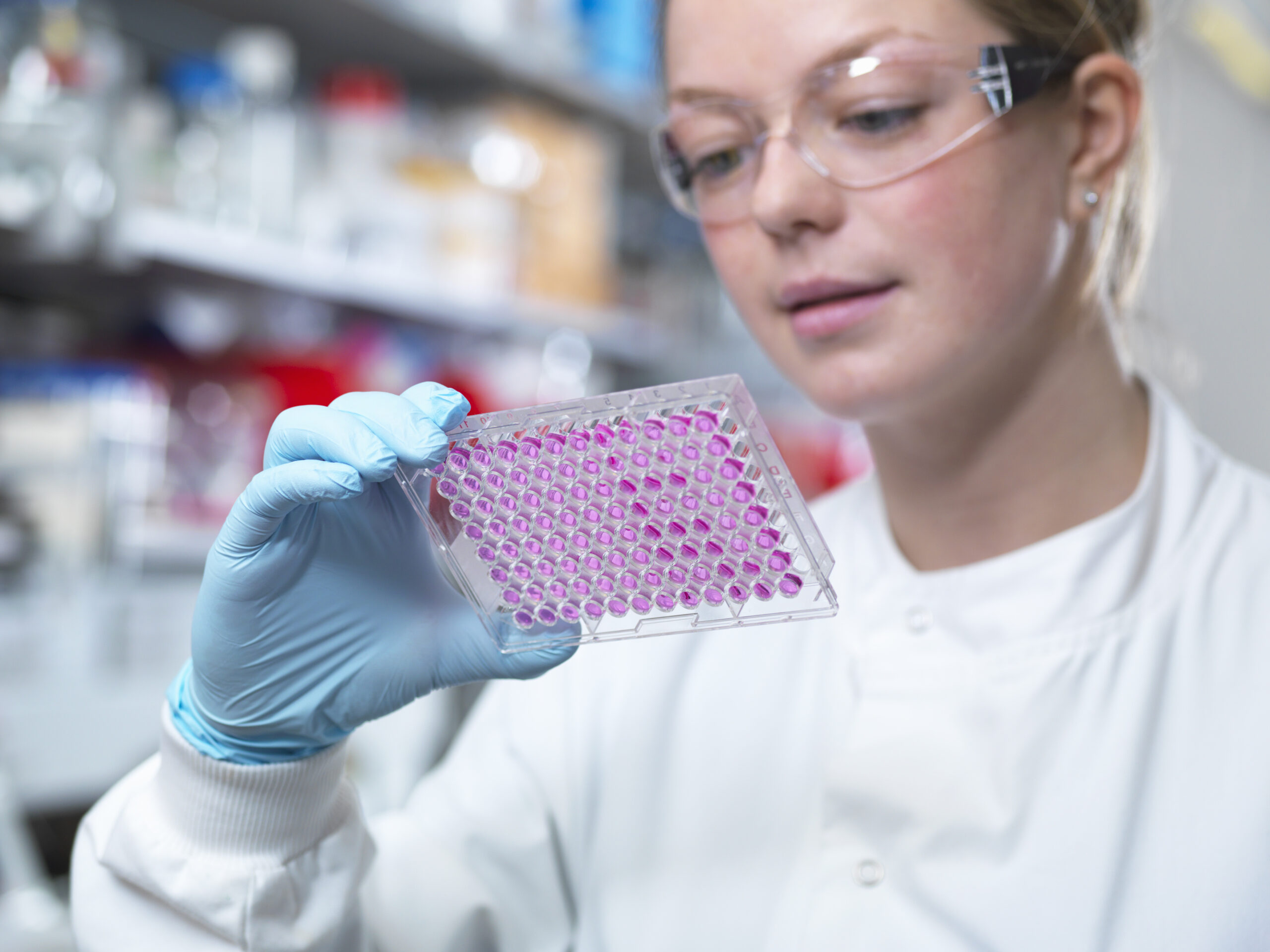An Enzyme-Linked Immuno-Sorbent Assay (ELISA) is a highly sensitive immunoassay used to detect and quantify antibodies, hormones, peptides, and proteins. This plate-based assay has a typical detection range of 0.1 to 1 fmole or 0.01 ng to 0.1 ng, making it a useful tool in a wide range of studies. As a result, ELISAs are used in several different fields and are particularly useful in biomedical research. They are also used for diagnostic purposes such as in pregnancy tests or the diagnosis of diseases like HIV.
ELISA – An overview
An ELISA assay works by immobilizing the analyte or antigen of interest which can be done in one of two ways: by direct absorption onto an assay plate or by indirectly capturing it using an antibody that has been fixed to the plate. Once the target has been immobilized the plate can be washed to remove all non-bound material. To facilitate detection, an antibody conjugated to an enzyme such as horse radish peroxidase or alkaline phosphatase is used which binds to the target antigen on the plate. Following this, a substrate can be added to the plate to enable detection. ELISAs are usually chromogenic, and the coloured product can be measured using a plate reader. This reading can then be compared to a standard curve and the amount of antigen in the sample is calculated using the optical density (OD).
Different Types of ELISA
There are four major types of ELISA assay: Direct, Indirect, Sandwich, and Competitive. Each of these has its own advantages and disadvantages depending on the type of research that you are carrying out.

There are four main types of ELISA
Direct ELISA
The Direct ELISA follows a simple protocol where the target is immobilized directly on the plate and a conjugated detection antibody is used to bind to it. The substrate can then be added, and a signal is produced that is proportional to the amount of the target molecule in the sample. The advantage of this technique is that it is fast and simple, however, because only one antigen is used it is less specific than other types of ELISAs and can result in high background noise.
Indirect ELISA
In the Indirect ELISA, the target is also immobilized on a plate but there is an additional amplification step involving a secondary antibody. This is because the primary antibody that is used to bind to the target is unconjugated, so a secondary antibody conjugated to an enzyme is required. The amount of the target in a sample can then be detected using a substrate and reading the signal. This method is highly sensitive and more flexible than the direct ELISA as more than one labelled antibody is bound per target molecule.
Sandwich ELISA
Sandwich ELISAs are the most common type of ELISA and are highly specific. They work by using two specific antibodies to sandwich the target. In this method, the antibody used to capture the antigen is coated onto the assay plate. The sample is then added and once captured it is immobilized on the plate. A second antibody, called the detection antibody is then added and is designed to bind to a different epitope on the antigen. This second antibody is conjugated to an enzyme so once the substrate is added a signal is produced that can be used to quantify the amount of the target molecule present. The main advantage of this technique is that it is highly sensitive since two antibodies specific to the target of interest are used. However, it does take longer and can be challenging to develop.
Competitive ELISA
The final ELISA type is the competitive ELISA. This is commonly used when the target molecule is very small, making it difficult to sandwich between two antibodies. Like a sandwich ELISA, the capture antibody is coated onto the assay plate but instead of using a second, conjugated antibody, this technique uses a conjugated antigen which competes with the target antigen present in the sample. The idea is that if there is more antigen present in the sample, then less of the conjugated antigen will bind. The substrate is added to produce a signal that can be measured but unlike the other ELISAs, this signal is inversely proportional to the amount of the target antigen in the sample. This is a great technique for quantifying small molecules but for other antigens, it is less specific as only one antibody is used.
To determine which ELISA is suitable for your experiment, have a look at our earlier blog post which is available here.
How Else Can We Help?
Cepham Life Sciences offer a range of species-specific ready-to-use ELISA kits for use in your research. For more information have a look at our website or contact one of our team who will be happy to answer all your questions.
Contact Cepham Life Sciences Today!
Cepham Life Sciences team is available to meet all your proteomics and molecular biology laboratory needs. We have a wide range of quality research products, and our team of experts are on hand to offer advice and answer any questions that you have. You can reach us by phone at (410) 636-4954 or Toll-Free at 1-800-257-1565 (USA/CANADA) or by email.
Follow us on Twitter, Facebook, Google+, and LinkedIn to keep up to date on all of our products and promotions.



